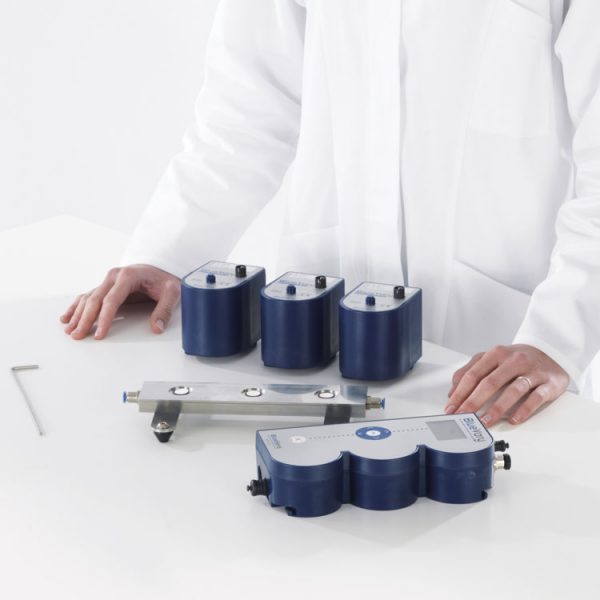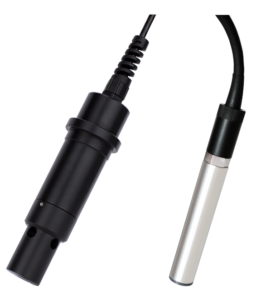

The unit has an aspect ratio of 3:1 and a bottom drive, its shaft equipped with 3 × 6-blade disk Rushton-type impellers. Braun ES15) stainless steel SIP fermentor with a working volume of 10 L. We used that culture to inoculate the bioreactors for batch cultivation, having stored it in 4–8 ☌ until inoculation, which was within 24 hours of preparation.īatch Cultivation: Batch cultivations for comparison ran in a 15-L Sartorius (formerly B. Before inoculation, we also added sterile ampicillin solution at 100.0 mg/L following fermentor setup.Ĭultivation: A 100-mL seed culture was grown in a 250-mL sterile Corning disposable polycarbonate Erlenmeyer flask (or a 500-mL culture in a 1-L Erlenmeyer flask) until it reached an OD600 of 1.0 ± 0.1. For cultivations using autoinduction, we also added a premade autoinduction reagent to a final concentration of 1.6 g/L glucose (VWR #0188-2.5 KG from Avantor) and 6.6 g/L lactose (MilliporeSigma #17814-1kg). We did not adjust pH before inoculation in any fermentor, but we measured it to be in the range of 7.2 ± 0.1 after medium preparation. Hydrated medium was filtered through a 0.22-µm filter for the GE and Thermo fermentors and sterilized in place for the Sartorius SIP fermentor. 11.4 g/L dibasic potassium phosphate from Avantor (JT Baker #3250-05).1.7 g/L monopotassium phosphate from Avantor (JT Baker #3248-01).
 12.0 g/L tryptone from Becton Dickinson (#211701). 24.0 g/L yeast extract from Becton Dickinson (#21730). 13.0 mL/L glycerol from Avantor (VWR catalog #5093-19). The choice of which induction method to use for each SUS was random.Ĭomposition of Complex Medium: For all batch cultivations, we used a base complex medium consisting of Both approaches are used and reported widely for production of inducible proteins from cloned genes in E. Expression of the target protein was induced by either adding isopropyl beta-d-thiogalactopyranoside solution (IPTG) from Sigma when the culture optical density at 600 nm (OD600) reached a certain range, or by autoinduction using a medium following Studier’s method ( 7). 30 SUS fermentor, comparing both with a Sartorius steam- or sterilization-in-place (SIP) fermentor at a working volume of 10 L for production of recombinant proteins.īacterial Strain: In this work, we used Escherichia coli BL21(DE3) containing a plasmid encoding the target proteins. Here, we report on our evaluation of a GE XDR-50 SUS fermentor and a Thermo Scientific HyPerforma S.U.F. 30 single-use fermentor, Thermo Fisher Scientific (In recent years, both GE Healthcare (Xcellerex) and Thermo Fisher Scientific have launched single-use fermentors that mimic the principles of stainless-steel systems and reportedly match them in performance as well ( 5, 6). Thus, an important part of our biologics manufacturing - antigens from microbial fermentation - still relies on conventional stainless-steel stirred tanks. However, single-use systems (SUSs) are rarely available for microbial applications, mostly because of the technical challenge in designing cost-effective SUSs that can meet high oxygen transfer needs and remove excessive heat generated during fermentation. Abbott Diagnostics has moved into this technology already for commercial production of some biologic molecules. Single-use bioreactors have become widely accepted and well established for cell culture applications in the biopharmaceutical industry for over a decade ( 1).
12.0 g/L tryptone from Becton Dickinson (#211701). 24.0 g/L yeast extract from Becton Dickinson (#21730). 13.0 mL/L glycerol from Avantor (VWR catalog #5093-19). The choice of which induction method to use for each SUS was random.Ĭomposition of Complex Medium: For all batch cultivations, we used a base complex medium consisting of Both approaches are used and reported widely for production of inducible proteins from cloned genes in E. Expression of the target protein was induced by either adding isopropyl beta-d-thiogalactopyranoside solution (IPTG) from Sigma when the culture optical density at 600 nm (OD600) reached a certain range, or by autoinduction using a medium following Studier’s method ( 7). 30 SUS fermentor, comparing both with a Sartorius steam- or sterilization-in-place (SIP) fermentor at a working volume of 10 L for production of recombinant proteins.īacterial Strain: In this work, we used Escherichia coli BL21(DE3) containing a plasmid encoding the target proteins. Here, we report on our evaluation of a GE XDR-50 SUS fermentor and a Thermo Scientific HyPerforma S.U.F. 30 single-use fermentor, Thermo Fisher Scientific (In recent years, both GE Healthcare (Xcellerex) and Thermo Fisher Scientific have launched single-use fermentors that mimic the principles of stainless-steel systems and reportedly match them in performance as well ( 5, 6). Thus, an important part of our biologics manufacturing - antigens from microbial fermentation - still relies on conventional stainless-steel stirred tanks. However, single-use systems (SUSs) are rarely available for microbial applications, mostly because of the technical challenge in designing cost-effective SUSs that can meet high oxygen transfer needs and remove excessive heat generated during fermentation. Abbott Diagnostics has moved into this technology already for commercial production of some biologic molecules. Single-use bioreactors have become widely accepted and well established for cell culture applications in the biopharmaceutical industry for over a decade ( 1). 
The y-axes on the left showed parameters mainly for monitoring, which changed through the fermentation process. Figure 1a: Fermentation profile of protein A in the Sartorius SIP system at 10-L scale (dO 2 in blue, pH in green, O 2 in red, CO 2 in black, pressure in cyan, air flow in magenta, agitation in orange, and temperature in olive) all controlling parameters in y-axes on the right were kept constant throughout growth.







 0 kommentar(er)
0 kommentar(er)
